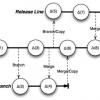Agile
Articles
|
How to Squeeze the Most Out of Your Automated Testing Jonathan Lindo describes examples of automated test infrastructure utilizing both open source and traditional, independent-software-vendor-sourced software. In addition, he discusses new techniques for extending the value of automated testing by transforming the process from defect finding to defect resolution by reducing the effort required to document, reproduce, and troubleshoot the defects generated from automated tests. |
Jonathan Lindo
July 25, 2011 |
|
|
Early Automation Approach An early automation approach involves the automation team in the early phase of the testing lifecycle to support agile or iterative projects. Automation scripting can commence in parallel to system development. |
||
 |
Branching to Distraction Branching can be an effective solution for managing change, enabling parallel development and improved productivity. But, working on a branch is a distraction and can decrease agility, productivity, and code robustness. Learn when the value of working on a branch outweighs the cost. |
|
|
Four Techniques to Wrap Your Head Around Complicated Code Software people love challenges and want to exercise their brains by tackling difficult problems. Our nature is to understand complicated problems, become familiar with various business domains, and generate a solution that helps the world become a better place. Nirav Assar explains four techniques to wrap your head around complicated code. |
||
|
Agile Customer Validation Vision When applying validation, should you limit yourself to the end-of-sprint review or demo—the practice most people associate with agile validation—or should you utilize other validation types where customers provide feedback? Where do the customers who attend validation sessions come from? In this article, you will learn about the importance of the ACVV and how to establish a vision to benefit the product and each project therein. |
||
|
It’s the Goal, Not the Role: The Value of Business Analysis in Scrum “Business analyst” is not a distinct role on Scrum or other agile teams. And yet, the goal for the team—to deliver high-valued product needs—requires strong business analysis skills. Ellen Gottesdiener and Mary Gorman describe the vital analysis work needed reach the goal, regardless of role. |
||
|
Simulation Games: A Way to Improve Communication in the Team One of the hardest daily tasks developers, QA, ScrumMasters, and product owners encounter is effective communication with others. Sound implausible? According to many articles, research, and personal observations, the main cause of project failure is not technology or hardware, but inefficient communication stemming from lack of effective communication between team members, incomplete business analysis, imprecise requirements, and vaguely formulated business objectives. |
||
|
|
Four Agile Tips to Eliminate Rework in Application Development Your applications need to meet business needs, overcome complex processes, and provide instant results to customers. And, ideally, they’ll require minimal rework on your part. The first step to success is requirements definition. Here, Filip Szymanski offers some tips from agile methods that will improve your requirements—even if you haven’t otherwise adopted agile. |
|
|
For Project Managers, Agile Is About Asking a Different Question Daryl Kulak explains that if we don't ask the right question at the beginning of the project, then no matter how well we answer, it won't be helpful. Perhaps the biggest difference between agile and waterfall is the question being asked. The scope of the project and any judgments of progress are related to this very fundamental question. |
||
|
Adapting to Change in Your Agile Strategies Len Whitmore writes on using agile practices for the development of software. In the ten years since the Agile Manifesto, the agile development domain evolved, as evidenced by such things as the six levels of planning: strategy, release, iteration, daily, and continuous, with strategy appearing to be the least evolved of the planning levels. |
Len Whitmore
June 3, 2011 |
Pages
Recommended Web Seminars
| May 23 | How Generative AI Boosts Speed and Quality in Software Testing |
| On Demand | Building Confidence in Your Automation |
| On Demand | Leveraging Open Source Tools for DevSecOps |
| On Demand | Five Reasons Why Agile Isn't Working |
| On Demand | Building a Stellar Team |










